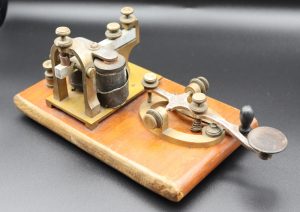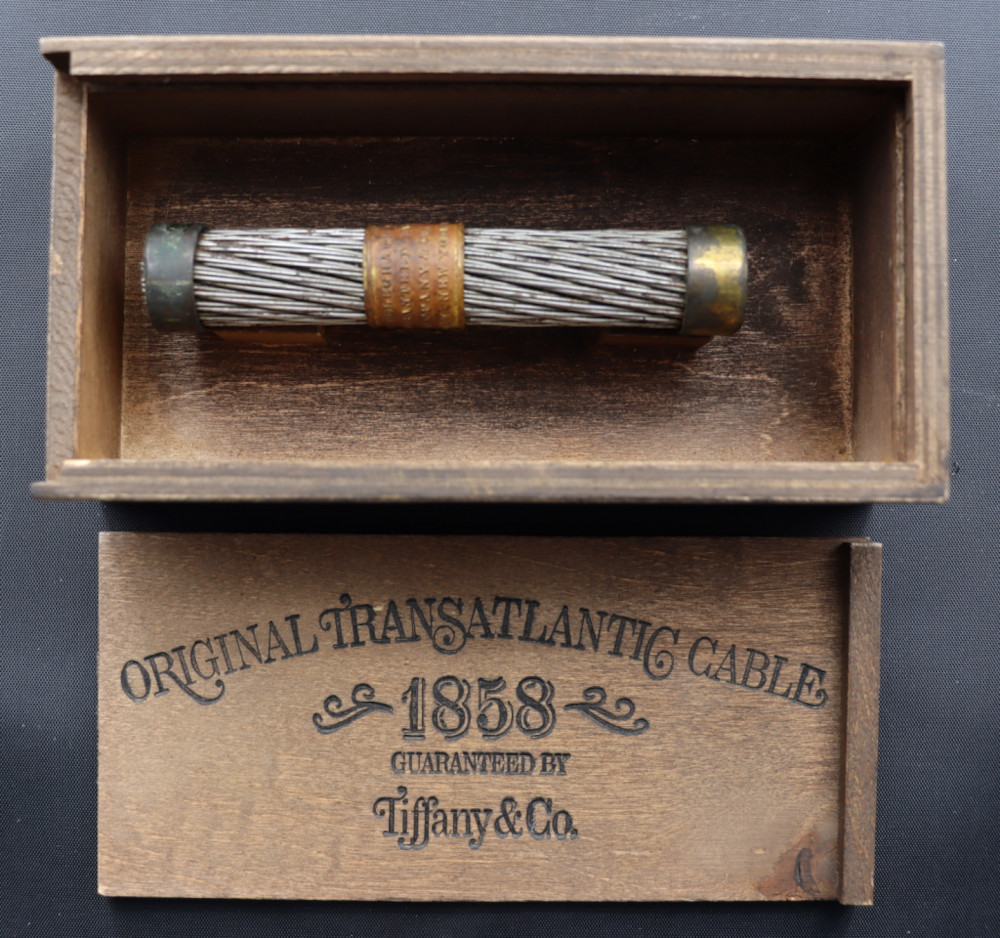Technology of the Time
In 1901, the transatlantic signal Marconi heard was ground-breaking. Since then, communications technology has improved greatly. The concept of radio as a means for communication seems archaic next to cell phones and social media. To better understand why Marconi’s work was so significant, we need to learn about how people communicated at the time.
Before 1901, the most common way to communicate was by mail. For hundreds of years, mail was the only way to communicate across the Atlantic Ocean. Sending a letter did the job, but it could take weeks or months to get your message across. That is assuming the ship made the journey safely. If the boat sank or your letter got wet, it could take months before you found out. There was definitely a need for a better, more reliable system.
Telegraphy
Cue the invention of telegraphy. Telegraphy is the sending and receiving of a message over a long distance without moving a physical object. Examples of early telegraphy include smoke signals, signal fires, and nautical flags.
We still use telegraphy today. Text messages, emails, and social media are all examples of it. Unfortunately, before Marconi, no forms of wireless telegraphy could span an entire ocean. But one type of telegraphy could: cable.
Wired telegraphy (also known as “electric telegraphy”) uses electricity to send messages through a cable. The first commercial wired telegraph was made by Sir William Cooke and Sir Charles Wheatstone in 1837. This system linked London and West Drayton, England. The 21-kilometres between the two sites was a record-breaking distance for wired telegraphy at the time. What made this so exciting, however, was not how far the signal travelled but how quickly the message was received. A letter could take a day or more to cover that distance. A telegraph arrived in seconds.
Telegraph Networks
By the 1850s, many countries in Europe and North America had wired telegraph networks, but the two continents were still not connected to each other. The fastest way to get news from Europe to mainland Canada was via a ship leaving Great Britain, which would dock in Halifax and then news was transmitted by wire from there.
News outlets in North America were willing to pay a lot of money for information. And they were willing to pay extra if they could get it faster. Frederick Gisborne, an English engineer, is credited with the idea of connecting Halifax and St. John’s, Newfoundland, by wire. He planned to run a cable underwater from Halifax to the west coast of Newfoundland and then across the Island to St. John’s. This would allow boats to stop in St. John’s and wire news from there, getting it to the continent two days earlier than when they docked in Halifax.
The Anglo-American Telegraph Company (AATC) were the ones to make this idea a reality. The government of Newfoundland made a deal with the AATC. It stated that the AATC would run an overland cable from St. John’s to the west coast of the Island of Newfoundland, then underwater from there to Nova Scotia. In exchange for doing this, the AATC would receive a 50-year monopoly on all telegraphy in Newfoundland. The deal was signed in 1854. It stated that until 1904, only the AATC was allowed to perform telegraphy on the Island of Newfoundland.
The Trans-Atlantic Cable
The extension of the wired system to the easternmost city in North America—St. John’s—was a major accomplishment, but progress didn’t stop there. In 1858, the first attempt was made to connect Europe and Newfoundland by underwater cable. It would be laid from Valentia, Ireland, to Bay Bulls, Newfoundland.
The Atlantic Telegraph Company (not to be confused with the AATC) wound the cable into barrels, loaded the barrels onto a ship, and slowly uncoiled the cable across the ocean floor. They safely landed it in Newfoundland to much celebration. Remember that only 20 years earlier, the record-breaking distance for wired telegraphy was 21 kilometers. This cable was around 3,000 kilometers long and deep underwater. It was revolutionary. It is said that the first message to cross the Atlantic was a congratulation from Queen Victoria of England to American President James Buchanan.
Unfortunately, the cable stopped working after only a few weeks because of poor materials and installation.
The Telegraph Construction and Maintenance Company was next to make an attempt, in 1865. Their cable snapped when they were halfway across the Atlantic. They tried to recover the end, but it was lost to the ocean.
In 1866, the AATC tried. Their effort worked. They successfully laid a cable from Valentia, Ireland, to Heart’s Content, Newfoundland, and it functioned for years to come. Before the hookup, it took two weeks for news to cross the Atlantic. When the AATC cable opened for business, it took only two minutes.



